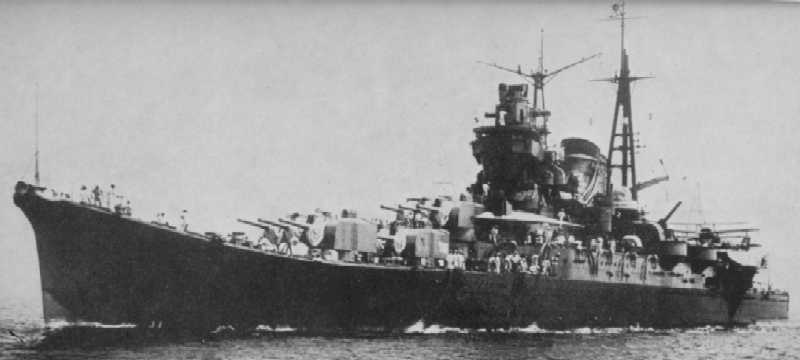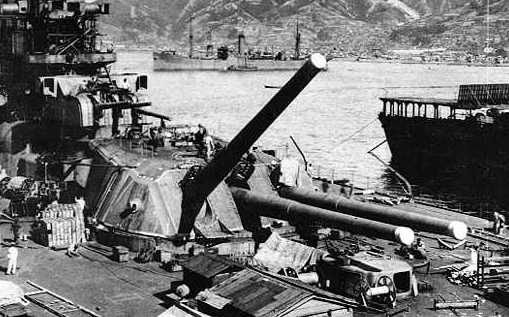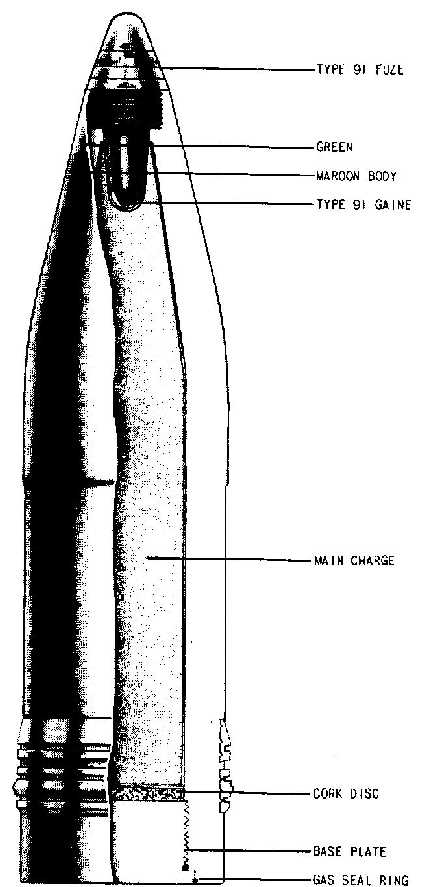| Notes:
1) These mountings generally resembled
the 20 cm (8") twin mount adapted for
holding three guns. To reduce lateral spacing, the breech for the
center gun opened upwards at a 45 degree angle, the weight being balanced
by springs. These mountings were originally intended to have a +75
degree maximum elevation for AA fire, but analysis showed that their slow
elevation and depression speeds with a fixed angle loading system coupled
with the inefficient hoist supply would have meant that the firing rate
would be too low to be effective. In addition, this high an elevation
would have resulted in somewhat delicate recoil and elevating mechanisms,
similar to the problems found with the 20 cm (8") mountings. For
these reasons, the final design limited elevation to +55 degrees.
2) These mountings were operated by electro-hydraulic
pressure with mineral oil used as the pressure medium. Each mounting
had two 100 hp electric motors, each driving a hydraulic pump located outside
of the turret in order to reduce noise. Normally, one motor was in
use while the other was in standby. Each gun had its own shell hoist
and powder hoist. Projectiles were brought from the shell rooms to
a circular track around the base of the revolving structure and then placed
into pusher shell hoists that delivered them directly to the gunhouse at
a rate of six a minute. The shell hoists came up to the right of
the left gun breech and to the left of the other two guns. Powder
bags were brought from the magazines through flashtight drums into a powder
handling room. The bags were then delivered through double flashtight
doors to bucket hoists similar in design to those for the 20 cm mountings.
These bags were delivered at a rate of five per minute to the gunhouse.
Hoists were hydraulically powered by the ring main. Projectiles were
hydraulically rammed first, and then the powder bags were manually loaded
into the breech and then hydraulically rammed. Ready-use AA shells
were stowed in the rear of the gunhouse.
3) Guns were individually sleeved.
It had originally been planned that the elevation rate would be 16 degrees
per minute to aid in AA fire but this was reduced to 10 degrees per minute
in service.
4) Complement per mounting was twenty-four
officers and men in the gunhouse, seven men in the shell room and ten men
in the powder room.
5) The Yamato and Musashi had their two
amidships mounts removed in 1944. Yamato had these replaced with
twelve additional 12.7 cm/40 (5") AA guns.
It had been planned that Musashi would be similarly rearmed, but the additional
12.7 cm mountings were not available prior to her loss.
6) The weight figure above is for mountings
without rangefinders. Weight with rangefinders is not available,
but I would estimate that these would have added about 5 tons (5.1 mt)
to the mounting.
7) Thin steel lagging used around most
of the gunhouse provided about a 10 cm (3.9 in) air space which shaded
the mount for tropical service.
8) The gun axes were 61 in (155 cm) apart.
9) The Yamato and Oyodo classes reused
the mountings removed from the Mogami class. The 15.5 cm turrets
removed from Mogami during her conversion were found after the war in a
warehouse on Eta Jima. |



